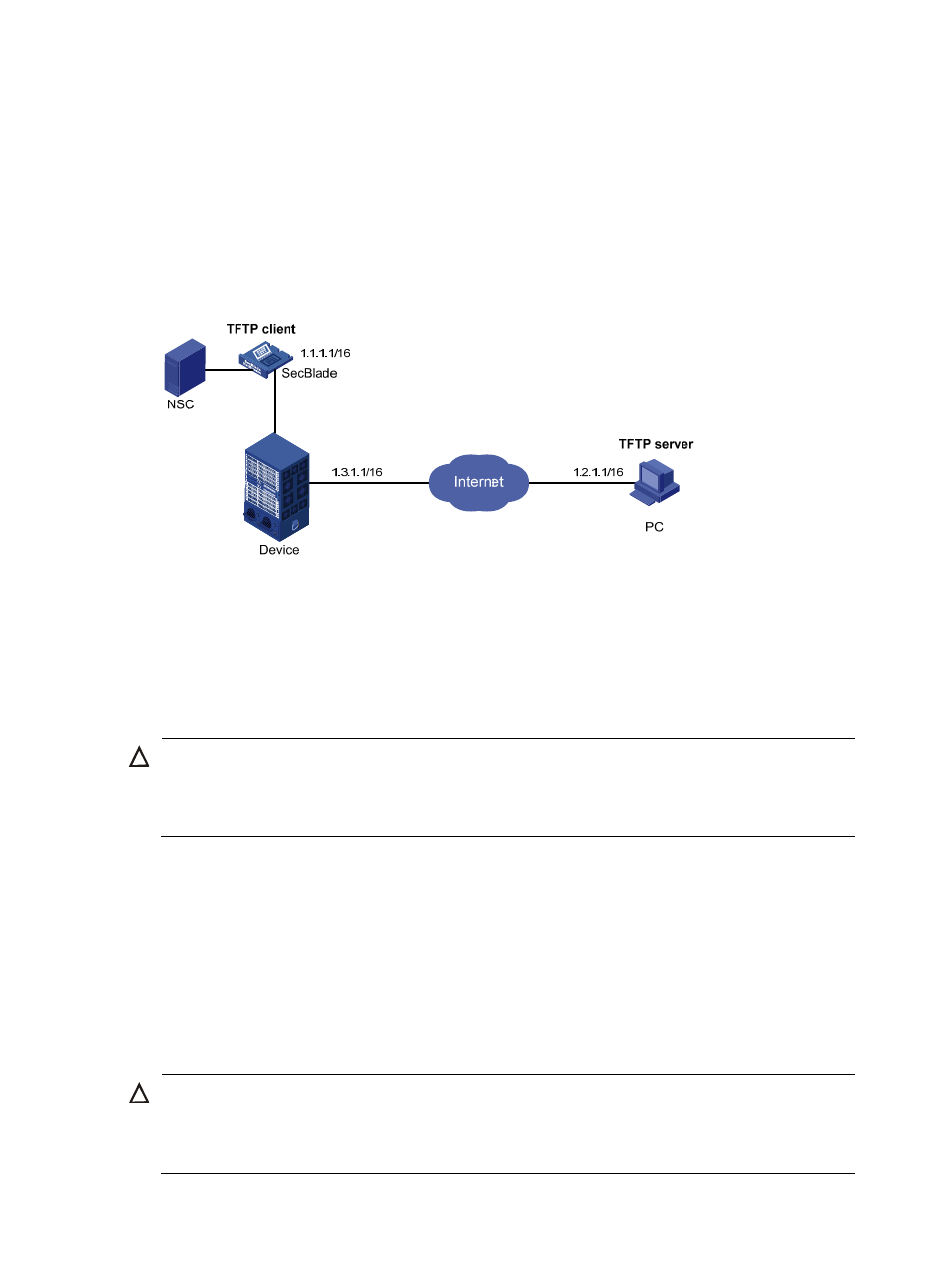Tftp client configuration example, Network requirements, Configuration procedure – H3C Technologies H3C SecBlade NetStream Cards User Manual
Page 238

223
TFTP client configuration example
Network requirements
•
As shown in
, use a PC as the TFTP server and SecBlade as the TFTP client. Their IP
addresses are 1.2.1.1/16 and 1.1.1.1/16 respectively. SecBlade and PC are reachable to each other.
•
SecBlade downloads a boot file from PC for upgrading and uploads a configuration file named
config.cfg to PC for backup.
Figure 70 Smooth upgrading using the TFTP client function
Configuration procedure
1.
Configure the PC (TFTP server), the configuration procedure is omitted.
•
On the PC, enable the TFTP server
•
Configure a TFTP working directory
2.
Configure SecBlade (TFTP client)
CAUTION:
If the available memory space of the device is not enough, use the fixdisk command to clear the memory
or use the delete /unreserved
file-url command to delete the files not in use and then perform the following
operations.
# Download application file newest.bin from PC.
<SecBlade> tftp 1.2.1.1 get newest.bin
# Upload a configuration file config.cfg to the TFTP server.
<SecBlade> tftp 1.2.1.1 put config.cfg configback.cfg
# Specify newest.bin as the main boot file to be used at the next startup.
<SecBlade> boot-loader file newest.bin main
# Reboot SecBlade and the software is upgraded.
<SecBlade> reboot
CAUTION:
The boot file used for the next startup must be saved under the root directory of the storage medium (For
a device that has been partitioned, the boot file must be saved on the first partition). You can copy or move
a file to the root directory of the storage medium.